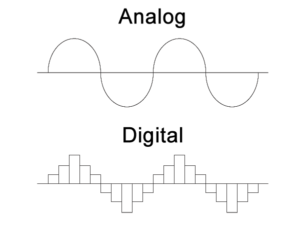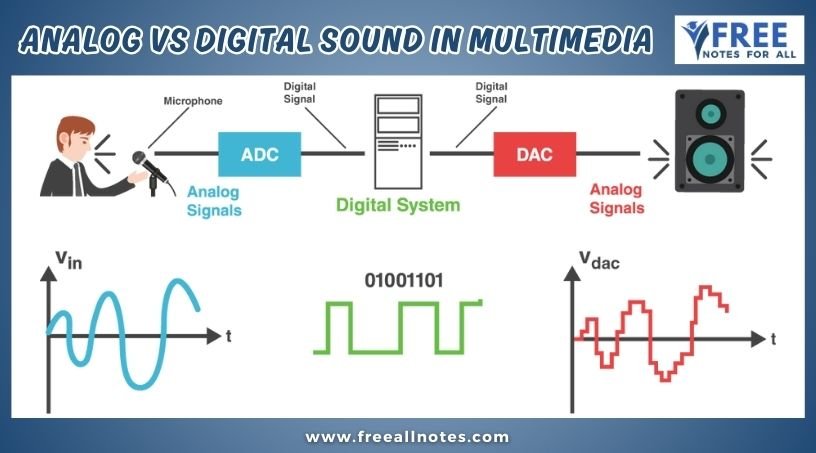Table of Contents
Analog vs Digital Sound
 Analog vs. Digital Sound refers to two different methods of capturing, storing, and reproducing audio. Each has its own characteristics, advantages, and disadvantages. Here’s a detailed comparison:
Analog vs. Digital Sound refers to two different methods of capturing, storing, and reproducing audio. Each has its own characteristics, advantages, and disadvantages. Here’s a detailed comparison:
Analog Sound
Definition: Analog sound refers to audio signals that are continuous waves, representing sound in a way that mimics the original sound wave. It captures the full range of sound frequencies and amplitudes.
Characteristics:
- Continuous Signal: Analog sound is represented as a continuous waveform, which means it can capture subtle variations in sound.
- Physical Medium: Analog audio is often stored on physical media such as vinyl records, cassette tapes, and reel-to-reel tapes.
- Warmth and Richness: Many listeners describe analog sound as having a “warmth” or “richness” due to its continuous nature and the harmonic distortion that can occur during playback.
Advantages:
- Natural Sound: Some audiophiles prefer the sound quality of analog recordings, believing they provide a more authentic representation of the original sound.
- Dynamic Range: Analog can capture a wide dynamic range, making it suitable for music with varying volume levels.
Disadvantages:
- Noise and Distortion: Analog recordings can introduce noise and distortion over time, especially with repeated playback.
- Physical Wear: Analog media can degrade with use, leading to a loss of quality.
- Limited Editing: Editing analog recordings can be more challenging and time-consuming compared to digital methods.
Digital Sound
Definition: Digital sound refers to audio signals that are represented as discrete values (samples) at specific intervals. It converts sound waves into binary code (0s and 1s) for storage and playback.
Characteristics:
- Discrete Samples: Digital audio captures sound by taking samples of the audio waveform at regular intervals, which are then quantized into binary values.
- Storage Medium: Digital audio is stored on various media, including CDs, digital audio files (MP3, WAV, etc.), and streaming platforms.
- Precision: Digital sound can be manipulated with high precision, allowing for extensive editing and processing.
Advantages:
- Consistency: Digital audio does not degrade over time like analog media, ensuring consistent playback quality.
- Editing Flexibility: Digital recordings can be easily edited, mixed, and manipulated using audio software.
- Storage Efficiency: Digital files can be compressed for easier storage and transmission without significant loss of quality (depending on the format).
Disadvantages:
- Sampling Limitations: The quality of digital sound is dependent on the sampling rate and bit depth. Lower rates can lead to loss of detail and fidelity.
- Coldness: Some listeners perceive digital sound as “cold” or less natural compared to analog, particularly in certain genres of music.
Summary
In summary, the choice between analog and digital sound often comes down to personal preference and the specific application.
- Analog Sound is favored for its warmth and natural quality, making it popular among audiophiles and in certain music genres.
- Digital Sound offers convenience, consistency, and flexibility, making it the dominant format in modern music production, distribution, and playback.
Both formats have their unique qualities, and many artists and producers use a combination of both to achieve the desired sound in their work.
You May Like to Browers More




